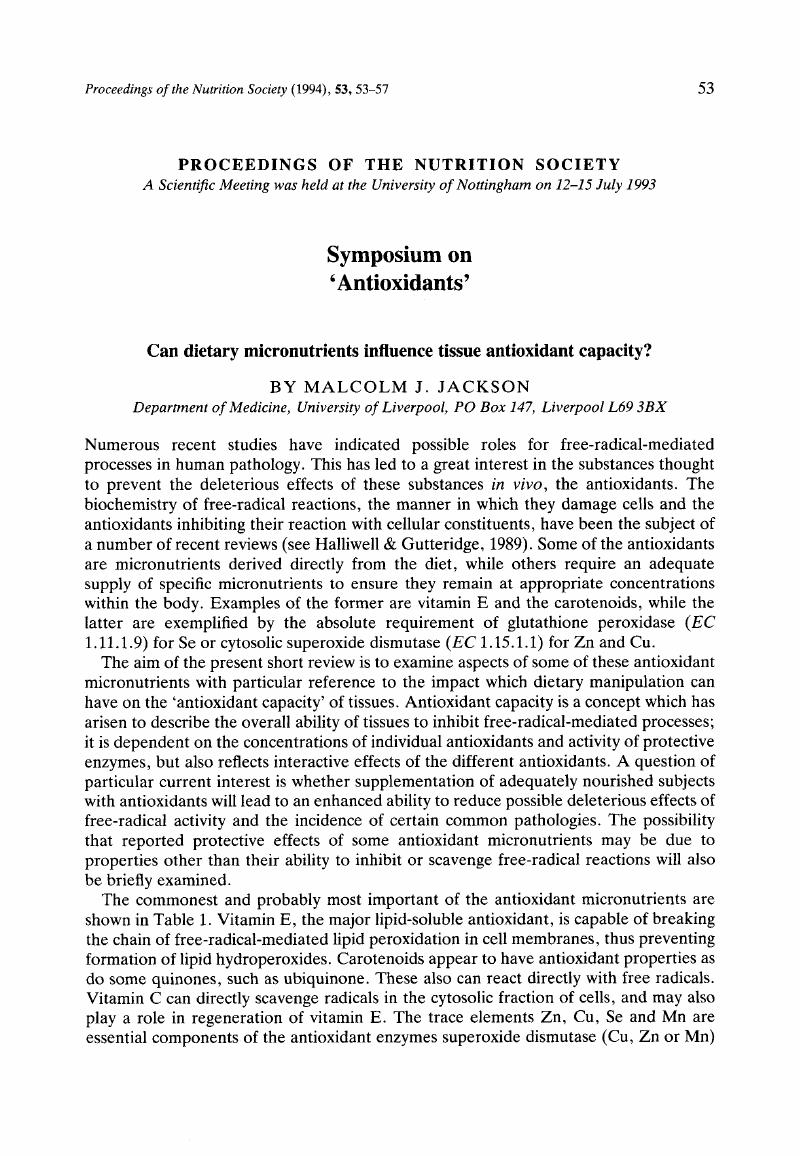Crossref Citations
This article has been cited by the following publications. This list is generated based on data provided by Crossref.
Trichopoulou, A
Kouris-Blazos, A
Vassilakou, T
Gnardellis, C
Polychronopoulos, E
Venizelos, M
Lagiou, P
Wahlqvist, ML
and
Trichopoulos, D
1995.
Diet and survival of elderly Greeks: a link to the past.
The American Journal of Clinical Nutrition,
Vol. 61,
Issue. 6,
p.
1346S.
Erhardt, Juergen Georg
Lim, Sang Sun
Bode, J. Christian
and
Bode, Christiane
1997.
A Diet Rich in Fat and Poor in Dietary Fiber Increases the In Vitro Formation of Reactive Oxygen Species in Human Feces.
The Journal of Nutrition,
Vol. 127,
Issue. 5,
p.
706.
Jackson, Malcolm J.
1999.
An overview of methods for assessment of free radical activity in biology.
Proceedings of the Nutrition Society,
Vol. 58,
Issue. 4,
p.
1001.
Rauma, Anna-Liisa
and
Mykkänen, Hannu
2000.
Antioxidant status in vegetarians versus omnivores.
Nutrition,
Vol. 16,
Issue. 2,
p.
111.
Trapp, Denise
Knez, Wade
and
Sinclair, Wade
2010.
Could a vegetarian diet reduce exercise-induced oxidative stress? A review of the literature.
Journal of Sports Sciences,
Vol. 28,
Issue. 12,
p.
1261.



